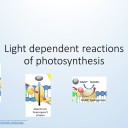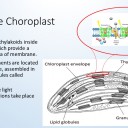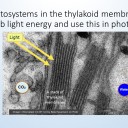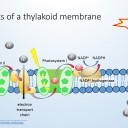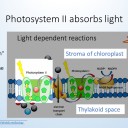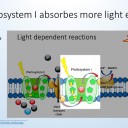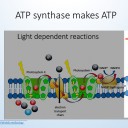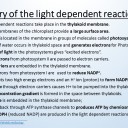Light Dependent Reactions
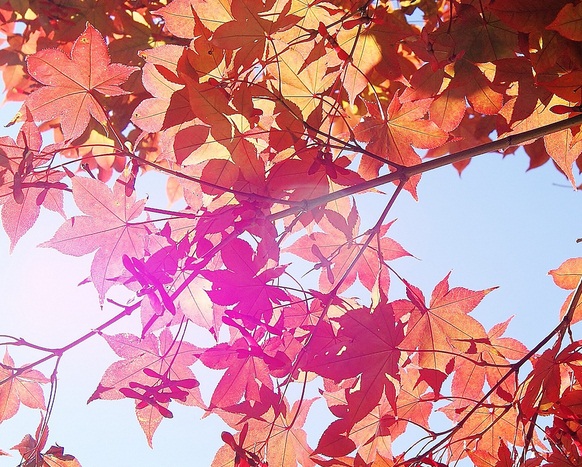 This activity reviews the light dependent reactions of photosynthesis which occurs on the thylakoids of the chloroplast. A first activity introduces the parts of the membrane and the stages of the reactions, a second activity uses SOLO hexagons to give students an opportunity to organise the ideas into a sequence or into groups. The final activity illustrates a method of remembering a complex sequence of reactions like this. It's worth trying, it could be some fun and it may be just the breakthrough some students need.
This activity reviews the light dependent reactions of photosynthesis which occurs on the thylakoids of the chloroplast. A first activity introduces the parts of the membrane and the stages of the reactions, a second activity uses SOLO hexagons to give students an opportunity to organise the ideas into a sequence or into groups. The final activity illustrates a method of remembering a complex sequence of reactions like this. It's worth trying, it could be some fun and it may be just the breakthrough some students need.
Lesson Description
Guiding Questions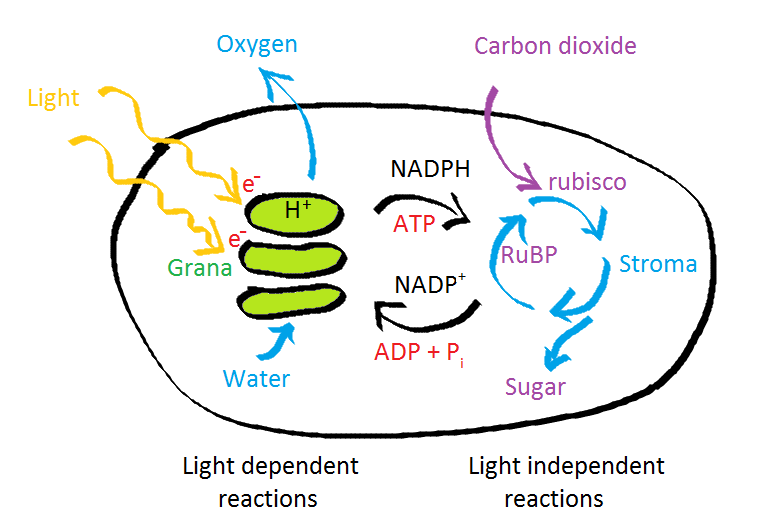
The diagram on the right summarizes photosynthesis.
In what ways is the diagram lacking detail?
Water is used in the light dependent reactions - what happens to it?
What happens to the hydrogen from the water molecule?
Activity 1 - A brief overview of the light dependent reactions
Look at the slides below and pay particular attention to the details of the explanation.
Activity 2 - Light dependent reactions SOLO hexagons activity
Learning is much easier when the facts are linked to each other in some way. Working out the links in a process like photosynthesis is an important part of the learning.
Use the ![]() Light dependent reactions SOLO hexagons worksheet. Cut out the hexagons and to do one of the following activities
Light dependent reactions SOLO hexagons worksheet. Cut out the hexagons and to do one of the following activities
- Describe each of the terms in your own words
- Put the terms in an order which best explains how the reactions occur.
- Group the terms in some way and explain why. (For example PSII and PSI)
Click the eye icon to display a suggested order of the reactions
Suggested order of the light independent reactions of photosynthesis
- The light dependent reactions take place in the thylakoid membrane.
- Thylakoid membranes of the chloroplast provide a large surface area.
- Chlorophyll is located in the membrane in groups of molecules called photosystems.
- Photolysis of water occurs in thylakoid space and generates electrons for Photosystem II.
- Absorption of light in the photosystems gives “excited electrons”.
- Excited electrons from photosystem II are passed to electron carriers.
- Electron carriers are embedded in the thylakoid membrane.
- Excited electrons from photosystem I are used to reduce NADP+.
- NADP+ accepts two high energy electrons and an H+ ion (proton) to form NADPH.
- Electron flow through electron carriers causes H+ to be pumped into the thylakoid space
- A proton concentration gradient is formed in the space between thylakoids.
- ATP synthase is embedded in the thylakoid membrane;
- H+ ions flow back through ATP synthase channels to produces ATP by chemiosmosis.
- ATP and NADPH (reduced NADP) are produced in the light dependent reactions
Activity 3 - Memory training - putting things into your brain!
"Many students today study too much, they don't trust their brain and so just keep studying. They don't know how to put things into their brian the way the brain likes it." says Idriz Zogaj.
This activity will get you thinking about the best way to train your memory. Watch this short video clip of Idriz Zogaj explaining how he memorizes a whole pack of 52 cards by looking at them just once. We only have 14 summary points.
Learning - the way your brain likes it.
Make a fun vivid animated story to connect key words together?
Use all your senses.
Make it 3D, something you could walk through or into.
"When your brain has fun you focus on the task ... and you reinforce the power of memory."
.
Try this with pairs of hexagons
Start by choosing the pairs, then highlight key words.

Then make up a fun vivid animated story in 3D which links the words.
You can do this in your own mind without writing it down ... but also try doodling as you make up the story if you like.
Click the eye icon to see an example.
Here are some pairs of key words
| Thylakoid membrane | Large surface area |
| Chlorophyll in photosystem II | Photolysis |
| Excited electrons | Electron carriers |
| Proton concentration gradient | Thylakoid space |
| Photosystem I | Reduce NADP+ |
| ATP synthase | Chemiosmosis |
| ATP | NADPH |
Make a fun vivid animated story to connect key words together?
This is one possible vivid animated story beginning ... using all our senses, in 3D, something that you could walk through or into.
Theo the thylakoid membrane went into a cafe and bought a large Chloro-cola (a green drink!) which she spilt all over the large surface area of the table making a terrible sticky mess.
Chlorophyll the assistant in this cafe (which was called Photosystem II Cafe) tried cleaning up by photolysis, separating electrons from water
These electrons got excited about this as there was a lot of bright light in the cafe so they jumped up and were carried off the table by electron carriers.
etc. etc.
Try it yourself - if you only complete 4 or 5 steps in the story it will still help you to remember the process.
You won't know if it works for you unless you try.
To see a list of the 14 statements (click the eye icon)
A list of 14 summary statements with highlighted key words arranged in pairs.
Test yourself by trying to remember the partners for each of the following key terms
(These are taken from the example above - so close the example box and cover your notes before beginning the test)
| Thylakoid membrane |
| Chlorophyll in photosystem II |
| Excited electrons |
| Proton concentration gradient |
| Photosystem I |
| ATP synthase |
| ATP |
Teachers' notes
This activity begins with some slides and a teacher will probably want to talk through these slides with their class.
There are other approaches which may involve the students giving more attention to the details.
- Students could look at the slides and make short notes.
- Students could be given the 14 statements on the summary slide and asked to use the other slides to organise the correct order.
Activity 2 gives students time to make links between the steps using SOLO hexagons. Students can work at different levels and teachers get instant feedback about their understanding by just looking at the layout of the cards and the way a student is working.
Possible tasks (in order from easy to harder:)
- Describe each hexagon in your own words.
- Make groups / pairs of hexagons which are connected in some way.
- Order the hexagons into a sequence which best describes the light dependent reactions.
Activity 3 is a slightly novel idea but based on a well known method of memory training. Perhaps this is best as an extension activity for faster students, but maybe it would be more help to students who have difficulty remembering.
This short (4 minute) video clip explains how light in the photosystems creates excited electrons, and illustrates some of the parts of the light independent reactions which also introducing the latest thinking about this, "quantum superpositioning".
Worth watching.

 IB Docs (2) Team
IB Docs (2) Team

